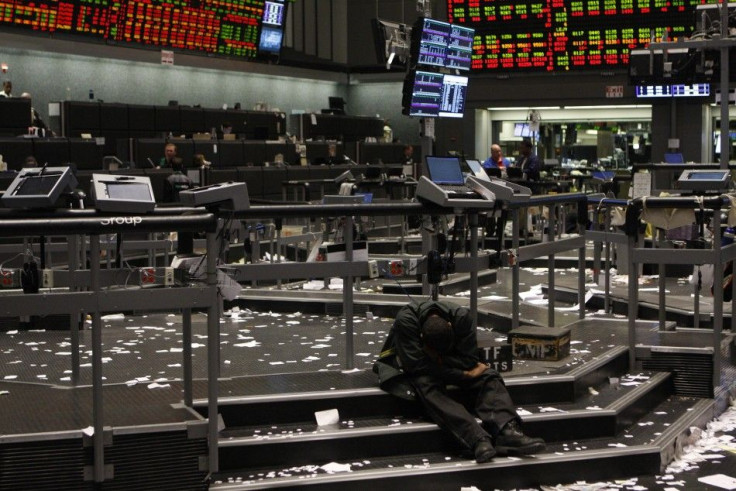VIX Futures Markets Crash On 'Bad Print,' Vexing Traders

If financial markets are going haywire, but the premier indicator of market panic suddenly goes off-line, do they still make a sound?
That metaphysical thought experiment vexed financiers on Wednesday after one of Wall Street’s most closely followed indicators of market panic caused the trading day to go from unusual to downright bizarre.
Around 12:37 p.m. Chicago time, trading was halted in futures and options linked to the CBOE Volatility Index, or VIX. The VIX, referred to colloquially as the market's “fear index," measures the divergence in future price expectations as seen in options for stocks within the S&P 500, and it is seen as a good predictor of generalized market mayhem. Historically, it spikes during equity sell-offs, like the one seen in equity stock markets Wednesday.
“What we saw was a bad print in the futures market,” Joe Tigay, a VIX options market maker for the Chicago-based Stutland Volatility Group, said, explaining what had just occurred in VIX trading.
According to Tigay, a massively out-of-whack bid placed in the market for VIX December 2012 futures, which was immediately detected by algorithms in the VIX option markets, had momentarily caused some chaos in the options pits. The trade in the futures market was never executed. But me-too program traders in the options market did execute several orders based on the bad futures market data.
“I think it was just a computer glitch,” Tigay offered.
Whatever it was, the temporary disruption in trading followed a day when other traders were noting the VIX was not moving as expected.
“I think VIX futures should be 1-2 points higher,” Enis Taner, a former Goldman Sachs trader who now manages his personal portfolio from New York, wrote on Risk Reversal, an options trading blog.
(Each 'point' on the VIX futures quote represents $100 worth of a tradeable contract).
Other traders in Chicago agreed with that assessment, suggesting something -- or someone -- was artificially keeping VIX spreads low.
“It’s very rare that the S&P 500 could be down more than 2% and not have classic panic selling, which is typically reflected in the VIX,” Randy Frederick, a managing director of active trading and derivatives at Charles Schwab & Co., told MarketWatch.
“The VIX is not always the greatest predictor of markets, but it’s surprising how subdued it is,” Frederick said.
Tigay agreed that historical experience VIX options could be trading as high as $2,000. But a panic spike to that level might have been tempered, Tigay explained, by prices in the instruments “already opened in the middle of the range” between $1,750 and $2,000.
At the close of the market, VIX options were trading for $1,869, up $111 or 6.31 percent, from Tuesday’s close, but off of intraday highs of $1,940. The 52-week high for VIX options is $3,646.
© Copyright IBTimes 2024. All rights reserved.





















